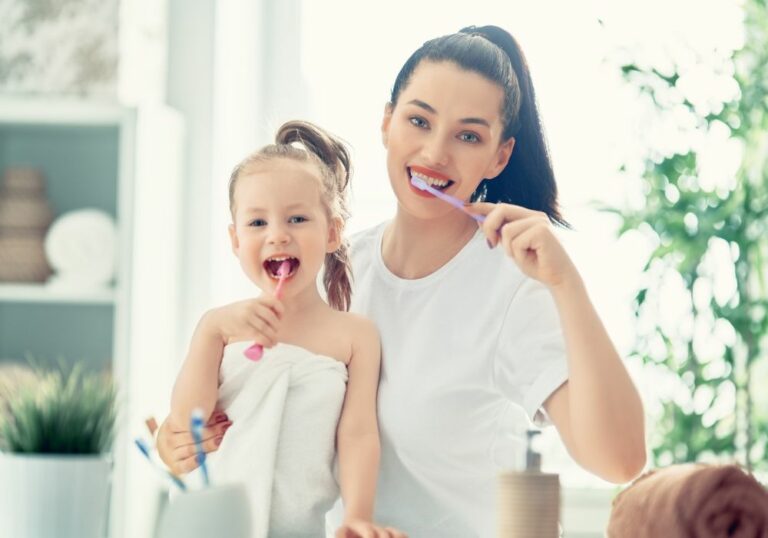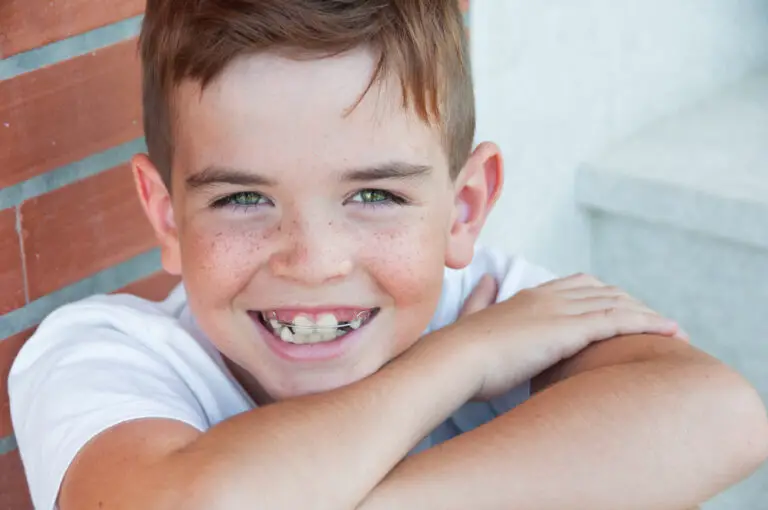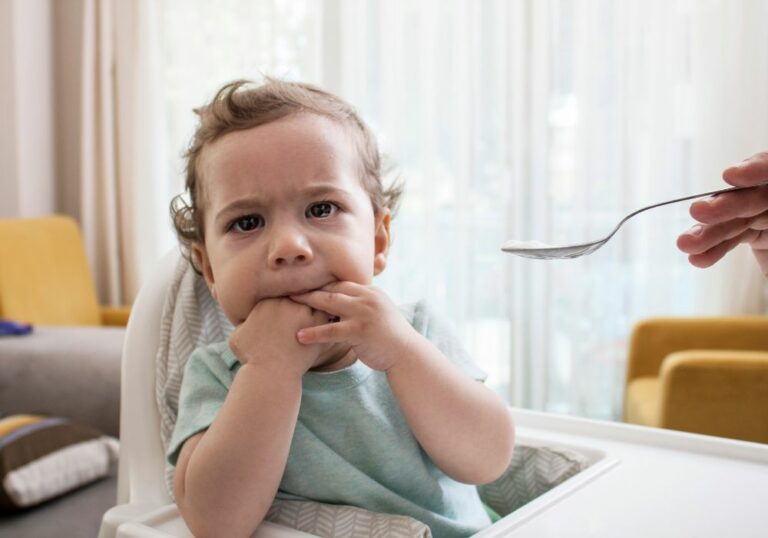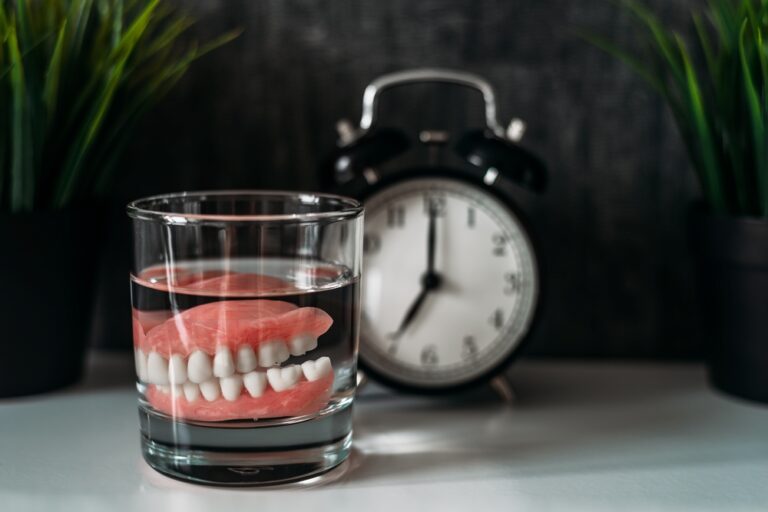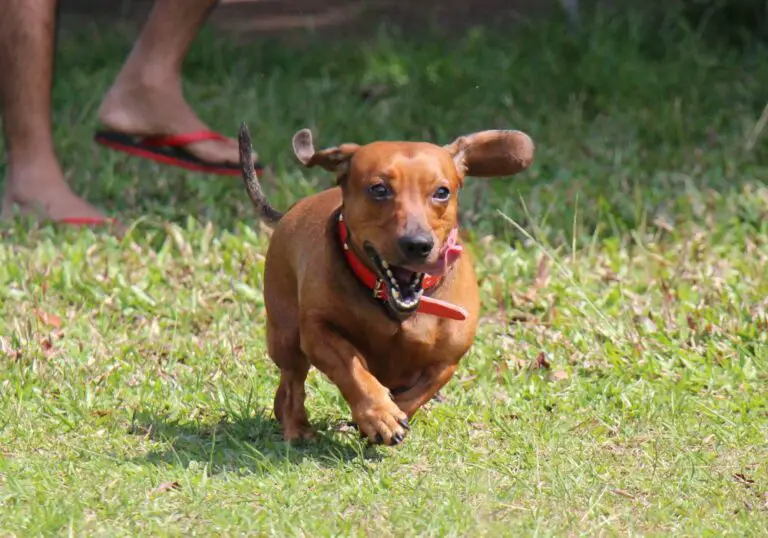Is your child turning two, and you wonder how many teeth the baby should have? Young and first-time parents often deal with similar questions, especially when the symptoms of 2-year molars appear!
Teeth are very important, not only because they allow us to bite, crush, and chew food, but they also affect the structure of our face and can be indicators of serious health problems.
Therefore, tracking the growth of your child’s teeth can help you care better for their dentition and prevent potential health issues! Now, let’s see how many teeth should a 2-year-old d have!
When Do Teeth Start Growing?
Before dealing with the number of teeth a 2-year-old should have, let’s first check when teeth start erupting. Unlike some animals, like sharks, most babies are born without teeth.
When an infant is born with teeth, those are called natal teeth, which usually have a weak root.
However, did you know that primary teeth start developing while the baby is in the womb? Yes, when a baby is 5 weeks old, the first teeth buds begin to develop in the jaw! When babies are born, they have 20 initial teeth, also known as milk or deciduous.
If you are wondering where are those 20 teeth, you have probably seen an infant, and you would remember the baby having so many teeth! They are hidden under the gums and will start emerging between 4 and 12 months of age.
The approximate period for teeth eruption for most infants is around 6 to 7 months, but given that each child is different and special, the period can start sooner or later.
It is hard to estimate when the teeth will erupt, and the teething symptoms often manifest before any tooth has even appeared. On the other hand, the baby may not display any symptoms at all!
What Types of Teeth Do People Have?
As you know, we are born with the primary set of teeth called the milk teeth. After the milk teeth fall out, we start to develop adult teeth! There are four types of teeth: incisors, canines, premolars, and molars.
Incisors are teeth set on the front of the upper and lower jaw. These teeth are different from the others, as they have a cutting edge and come together like scissors.
Canine teeth are pointy and sharp, arranged on the upper and lower jaw. These teeth are used to tear food. Unlike canines, premolars have flat surfaces, and we use them to crush food, while molars are larger than premolars and located at the back of the mouth.
What is the Order of Tooth Appearance in Infants?
So, which teeth appear first? Usually, the bottom front teeth, commonly called lower central incisors, erupt first between 6 and 12 months. As mentioned, some babies can develop these teeth even before 6 months.
The next ones to appear are the top front teeth, also known as upper central incisors, and they develop between the 8th and 12th month.
The next in line are the two upper lateral incisors and two lower lateral incisors, which develop in the 9th to 13th month, although they usually emerge in the 10th month.
When it comes to molars, the first molars erupt between 13 and 19 months, while the lower molars appear slightly later, between 14 and 18 months. Canines, also known as cuspid, appear between 16 and 22 months, while the lower canines appear right after, at 17 to 23 months.
And last but not least, the lower second molar appears between 23 and 31 months, while the upper second molar erupts at 25 to 33 months.
How Many Teeth Should A 2-Year-Old Have?
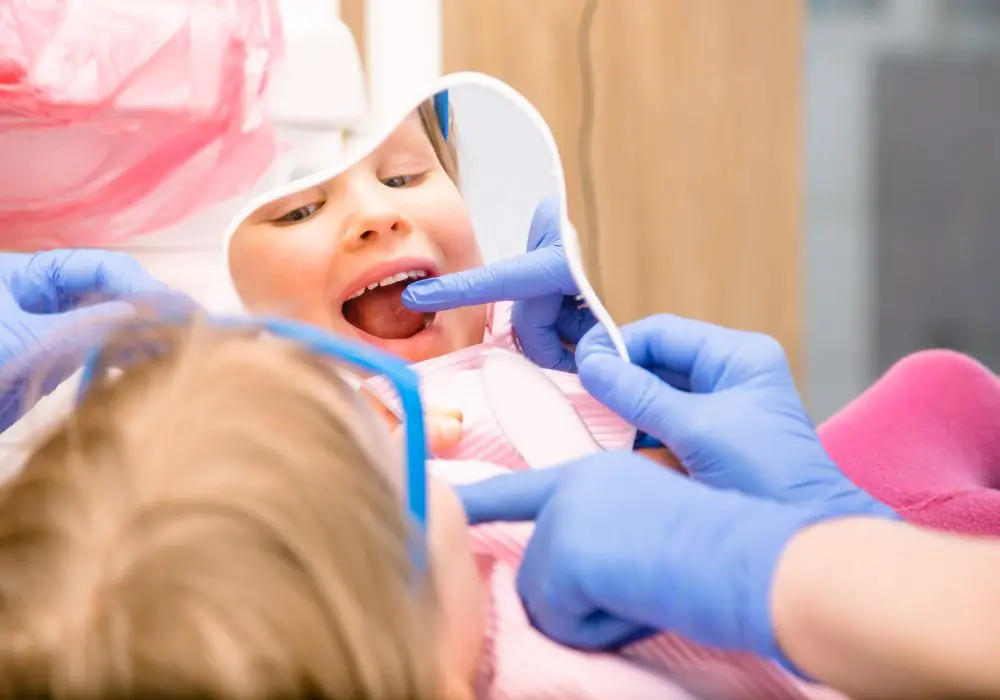
Given the order of tooth appearance, a baby that is 24 months old usually has around 16 teeth, give or take. Some children can have 12 teeth at 2 years old, but remember that this journey is individual, and if they do not have 16 teeth, that does not mean something is wrong.
The molars are the last to erupt; a two-year-old baby usually has both lower second molars, but the upper second molar start erupting at 30 months or when a baby is two-and-a-half-year-old.
Do I Need To Take Care of My Child’s Milk Teeth?
Many people tend to say: “Well, those are only milk teeth, and they will fall out on their own eventually, so there is no point in taking care of them.” This is incorrect; although these teeth are not permanent, brushing the child’s teeth is still important.
Why? The milk teeth are the foundation for permanent teeth, which makes them highly important. Even though parents do everything in their power to prevent tooth decay, according to a study, 23% of all kids develop cavities before their 5th birthday.
Decayed teeth infer a visit to the dentist, and we all know how that goes. For most children, it is a traumatic experience ridden with inconvenience and pain, plus dental health care is expensive.
When a child’s teeth start falling out or rotting due to the decay, they leave a gap (like all teeth), but this affects the arrangement and movement of the other teeth, which may call for braces later (again, expensive).
Ultimately, teeth are necessary for eating and chewing, which is the first step for good digestion, but they also allow us to speak clearly and stabilize the jaw and surrounding bones.
As mentioned, teeth affect the structure of the face, but having a nice smile can do wonders for one’s confidence and a number of other benefits.
When Do Milk Teeth Start Falling Out?
By the time your kid reaches three years old, it will develop the full set of 20 milk teeth; 10 on the upper jaw and 10 on the lower jaw! So, when do they start falling out?
We start developing permanent teeth at six years old, inferring that the milk teeth start falling out at the same age.
Keep in mind that milk teeth can start falling out at the age of seven, which does not mean there is something wrong with the child’s teeth. Also, the teeth do not fall out all at the same time, but one by one.
What Are the Symptoms of Teething?
As we all know, teething can be painful and annoying, often driving kids crazy. The eruption of teeth, especially second molars, which develop last, tends to be a painful period, which many parents try to relieve.
There are a number of visible symptoms that indicate that your child’s teeth are moving and breaking through the gums. In order to relieve the pain and the itching sensation, the child usually chews and gnaws toys, their fingers, or their clothing, whatever they can reach.
You can also inspect their gums; when teeth are erupting they are usually red and sore. Also, it is not uncommon for the child to have a mild temperature between 36.3 and 37.1°C (97.3-98.7°F) and develop a rash on their face.
There are several ways to relieve the pain and itching; you can rub and massage the child’s gums with a clean finger. Considering that cold remedies are the best for teeth eruption, you can also have your kids bite on a gold gauze pad.
Another great option is to buy a teething ring, which is excellent for chewing. However, be careful when choosing the ring because some can be very tough and can thus damage the teeth.
How to Care For Baby Teeth?
As mentioned, caring for deciduous teeth is highly important, and you, as a parent, can do a number of things for your child’s dental health, even when it is just a couple of months old!
The best way to determine the appropriate cleaning regime depends on the number of teeth and whether a child has any.
For babies under six months with no teeth erupting, the best way is to use a clean and damp washcloth and gently wipe the gums and mouth.
When the first tooth ‘rears its head,’ you can switch to a very soft toothbrush and brush the teeth once a day with plain water. If a child is one year old, that means it is time for the first dental check-up!
Then, when a child is 18 months old, you can gently brush the teeth with toothpaste, which needs to be low on fluoride. The amount of toothpaste should not exceed the size of a grain of rice, and make sure that the baby does not swallow it.
When the child turns two or three, you can start flossing the teeth that touch each other. Ultimately, when the child turns four or five, you can start teaching them how to brush their teeth independently.
Although kids love eating sweets and drinking sodas, it is crucial to restrict their intake of foods high in sugar because all sugars, even the good ones, contribute to tooth decay!
Conclusion
To summarize, a 2-year-old child should have between 12 and 16 teeth. The process of erupting teeth is individual for every child; sometimes, a child has 12 teeth, and the other of the same age has 16. That said delayed teething is normal!
However, if the kid has less than 12 teeth, that is your clue to visit the dentist.
How do you deal with visiting the dentist? Please, share your experience with us! If you have any questions or want to share your opinion, do not be shy and ask away!

